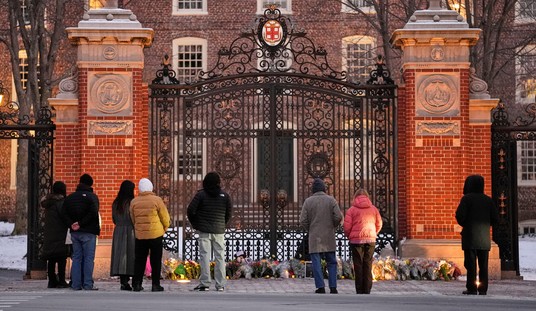The Census Bureau today released the official reapportionment figures from the 2010 Census, which will determine (1) what states gain and lose House seats and thus will be prime targets for redistricting and (2) what states correspondingly gain and lose votes in the Electoral College for 2012.
By and large, the news was good for the GOP. For the immediate impact, I’ll focus on the Electoral College, although it’s worth noting how many of the redistricting states – especially the two biggest gainers, Texas (+4) and Florida (+2), and one of the two biggest losers, Ohio (-2) – are now under heavy GOP control (and the GOP just recently took control of the NY State Senate, assuring a place at the table in the other state losing more than one seat, as NY is also -2).
Here are the other states gaining or losing one seat. Gaining a seat:
Arizona, Georgia, Nevada, South Carolina, Utah, and Washington
Thus, the GOP picks up six seats in three of the most reliably red states in the union (UT, SC & TX), five seats in three states that have been solidly if not overwhelmingly Republican (FL, GA, AZ), one in a state that has leaned narrowly Republican but went Democratic in 2008 and at the Senate level in 2010 (NV), and one state that has been reliably but narrowly Democrat (WA). Note who is missing: California failed to gain seats for the first time since 1930. Also two states where Democrats had made recent strides – North Carolina and Colorado – failed to gain seats as some early projections had shown, while Minnesota narrowly avoided losing one.
Now, the losers, besides New York and Ohio:
Illinois, Iowa, Louisiana, Massachusetts, Michigan, Missouri, New Jersey, and Pennsylvania
Again, mostly good news. Despite the recent revival of the GOP in the Northeast (see Scott Brown, Pat Toomey, Tom Corbett, Chris Christie, Paul LePage, and GOP gains of five House seats in NY alone in 2010) and Michigan and Illinois (Rick Snyder and Mark Kirk), the loss of seven seats across NY, PA, NJ, MA, MI & IL is overall good news for Republicans, especially at the presidential level. Note that NY & PA have both lost seats every census since 1930; NY is now in parity with Florida with 29 electoral votes each. IA is more of a swing state (one of just three states that flipped between 2000 and 2004, when the red-blue divide was static) and especially friendly to ethanol-industry-owned Barack Obama, MO more red and LA now reliably so at the presidential level, but on balance this is not such bad news for the GOP.
This sets the following as the states with 10 or more electoral votes:
CA-55
TX-38
FL-29
NY-29
PA-20
IL-20
OH-18
GA-16
MI-16
NC-15
NJ-14
VA-13
WA-12
TN-11
AZ-11
IN-11
MA-11
MO-10
MD-10
MN-10
WI-10
Sean Trende pulls the regional patterns underlying the 9.7% population growth since 2000:
The official population of the U.S. as of April 1, 2010 was 308,745,538, up from 281,421,906 in 2010. The Northeast grew 3.2 percent, the Midwest grew 3.9 percent, the South grew 14.3 percent and the West grew by 13.8 percent. Overall, it was the slowest growth in the country since the 1930s.
And the Electoral College consequences:
If the 2008 election had been held under these census numbers, President Obama would have defeated John McCain 359 to 179 – essentially flipping Iowa into the Republican column before the election begins. For 2004, the numbers are starker still: Bush’s 286-251 victory would become a 292-246 win, meaning that even if Kerry had won Ohio, he still would have lost (in 2004, flipping Ohio would have been sufficient to give Kerry the win).
And finally, in 2000, rather than a 271-266 win (with one faithless Gore/Lieberman elector from DC abstaining), the changes of the past two decades would have resulted in a President Bush win of 285-252.
These numbers are an opportunity for Republicans, but also a challenge, since the main areas undergoing population growth are (with a few exceptions like Utah) growing mainly through a growing Latino population. Which explains why Democrats are so eager to try to divide off Latino voters to vote as a homogenous race-conscious bloc the way African-Americans do; it’s their only path to offset their shrinking deep-blue-state power base. There’s no future in being the party of the Northeast and the West Coast, and Democrats know this; liberal pundits and left-wing bloggers are quite open about the extent to which they bank on racial demographics as their salvation, and those demographics only benefit them if they can maintain very high rates of racial division in the voting patterns of Latino and African-American voters, far higher than you would find among white voters. Republicans don’t have to win the Latino vote outright to fend off that challenge, they only need individual Latinos to remain open enough to both sides that Republicans can persuade a decent percentage to vote GOP, as the Democrats still do among white voters. Frankly, it’s not a coincidence that the two states with the most population growth have had, for the past decade and a half, GOP governors starting with George W. and Jeb Bush who worked hard to cater to Latino voters and declined to join in the harshest anti-immigration (even anti-illegal-immigration) rhetoric or policies.
Let’s look deeper at the map through the eyes of a Democrat, and you can see why the campaign of relentless racial division touted on a daily basis by left-leaning commentators and pursued by President Obama in some of his ugliest moments of the 2010 stretch run – calling Republicans the “enemies” of Latinos who had to be “punished,”, asserting that Republicans were “counting on …black folks staying home” – will only be exacerbated as Obama’s natural strategy for 2012, given how his performance in office has lost him much of the support among white voters (and some among Latino voters) that he enjoyed in 2008. Let’s say the GOP candidate wins the following states, most of which are natural GOP states even though some went for Obama in 2008:
AL, AK, AZ, AR, FL, GA, ID, IN, KS, KY, LA, MS, MO, MT, NE, ND, OH, OK, SC, SD, TN, TX, UT, WV & WY
That’s 238 electoral votes; 270 are needed to win, and conventional wisdom would tell you that a Republican who wins Ohio and Florida is sitting pretty. Meanwhile, Obama takes:
CA, CT, DE, DC, HI, IL, ME, MD, MA, NJ, NY, OR, RI, VT, WA
That’s just 14 states plus DC, but carrying 186 electoral votes. The Republican is up by 52, but there’s still 114 up for grabs.
Now, let’s divide the remaining states in three groups.
One is the states with largely white populations but that have tended to be favorable turf for Democrats in the past: MN, WI, IA, & NH. That’s 30 votes. Give those to the Republican – an awfully generous assumption, but we’re looking at how Obama and his team will view the states they risk writing off by a strategy of racial division – and you’ve still only got 268 votes for the Republican, two shy of victory, 248 if you can’t wrest Minnesota and Wisconsin from the Democrats.
Now, on the other side, look at the three swing states with large Latino populations that have represented the decisive force in the past few election cycles, as left-leaning commentators have often touted: CO, NM, & NV. That’s 20 votes. If Obama can sweep all three, he’s up to 206.
That leaves us with PA, MI, VA, NC: four states with large African-American voting blocs, two traditionally Democrat – but trending Republican in 2010 (PA & MI) – and two traditionally Republican – and heavily GOP in 2009-10 (VA & NC) – but won by Obama in 2008. PA & MI are still a significant vote (36 EVs), and with union-driven GOTV, Obama should be competitive; if he takes those by pushing African-American turnout over expectations, he trails 268-242, with the 28 electors of VA & NC to decide the prize. And if there’s large enough African-American turnout there as well to tip those two states over to Obama, he’s at 270 and re-elected, without winning Florida, Ohio or Indiana, without winning Minnesota, Iowa, New Hampshire or Wisconsin. Divide et impera.
That’s all educated speculation, for now, and the 2009-2010 elections certainly suggest that it’s far from a sure bet strategy for Obama. But given his history and the open thinking of people on his side, this is the map to victory I expect him to pursue, one that places virtually its entire emphasis on race as the trump card. The largest challenge for the GOP will be to play on the issues that favor Republicans – basically, everything but racial division and possibly gay rights – and avoid getting trapped in the racially polarized map that Obama is likely to consider his most plausible path to re-election.













Join the conversation as a VIP Member